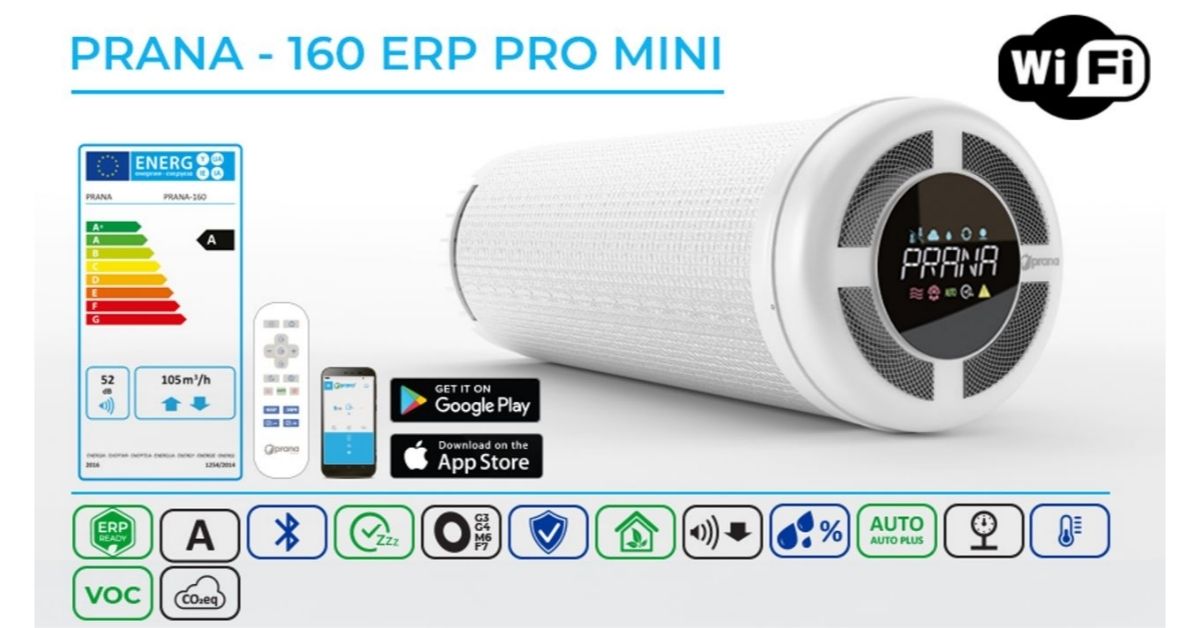In the ever-evolving landscape of modern building technologies, Decentralized Mechanical Ventilation with Heat Recovery (MVHR) systems is a pioneering force. These systems are redefining how we manage indoor air quality and energy efficiency in our homes and commercial spaces, offering various benefits beyond conventional ventilation and heating approaches.
Decentralized MVHR systems introduce a paradigm shift in ventilation and heat recovery compared to traditional centralized HVAC systems. Instead of relying on a single central unit to circulate air throughout a building, decentralized MVHR systems employ a network of smaller, strategically positioned units. These units integrate advanced heat recovery technology, efficiently transferring heat between incoming and outgoing airflows. This process conserves energy and ensures a consistent indoor climate throughout the year.
One of the most notable advantages of decentralised mechanical ventilation with heat recovery systems is their ability to elevate indoor air quality. By situating units closer to potential sources of indoor pollutants, such as kitchens and bathrooms, these systems effectively eliminate contaminants and odors, ensuring occupants receive a continuous supply of fresh and clean air. Furthermore, the heat recovery component ensures that incoming fresh air is preconditioned with the temperature of the outgoing exhaust air, promoting a comfortable indoor environment while minimizing energy waste.
Energy efficiency stands as another compelling feature of decentralized MVHR systems. Traditional HVAC systems often suffer from energy losses during air distribution, leading to elevated energy bills and a larger environmental footprint. Decentralized MVHR mitigates these losses by localizing ventilation and heat recovery, resulting in reduced energy consumption, lower operational costs, and a reduced carbon footprint. This harmonizes perfectly with the growing global emphasis on sustainable building practices.
Decentralized MVHR systems exhibit remarkable adaptability and versatility, making them suitable for diverse building types and sizes. Whether it’s a single-family residence, a multi-story office building, or a commercial establishment, these systems can be tailored to meet specific requirements. Their modular design streamlines scalability, rendering them ideal for both new constructions and retrofitting existing structures. This adaptability ensures that decentralized MVHR remains a versatile solution for enhancing indoor air quality and energy efficiency across a wide spectrum of contexts.
Furthermore, these systems provide precise control and zoning options. Each unit can be independently operated, enabling meticulous control over temperature and ventilation in different areas of a building. This not only enhances comfort but also fosters energy savings by preventing over-conditioning of unoccupied spaces. The integration of smart building technologies empowers occupants to remotely monitor and adjust the system, further optimizing energy usage and ensuring year-round comfort.
In conclusion, Decentralized Mechanical Ventilation with Heat Recovery systems represents a significant leap forward in HVAC technology. They offer holistic solutions to the challenges of indoor air quality, energy efficiency, and sustainability. By decentralizing ventilation and incorporating heat recovery, these systems deliver fresh and clean air while simultaneously reducing energy consumption, operational costs, and environmental impact. In an era marked by heightened environmental consciousness and the pursuit of sustainable living, decentralized MVHR emerges as an indispensable tool in creating healthier, more efficient, and environmentally responsible indoor environments for all.

